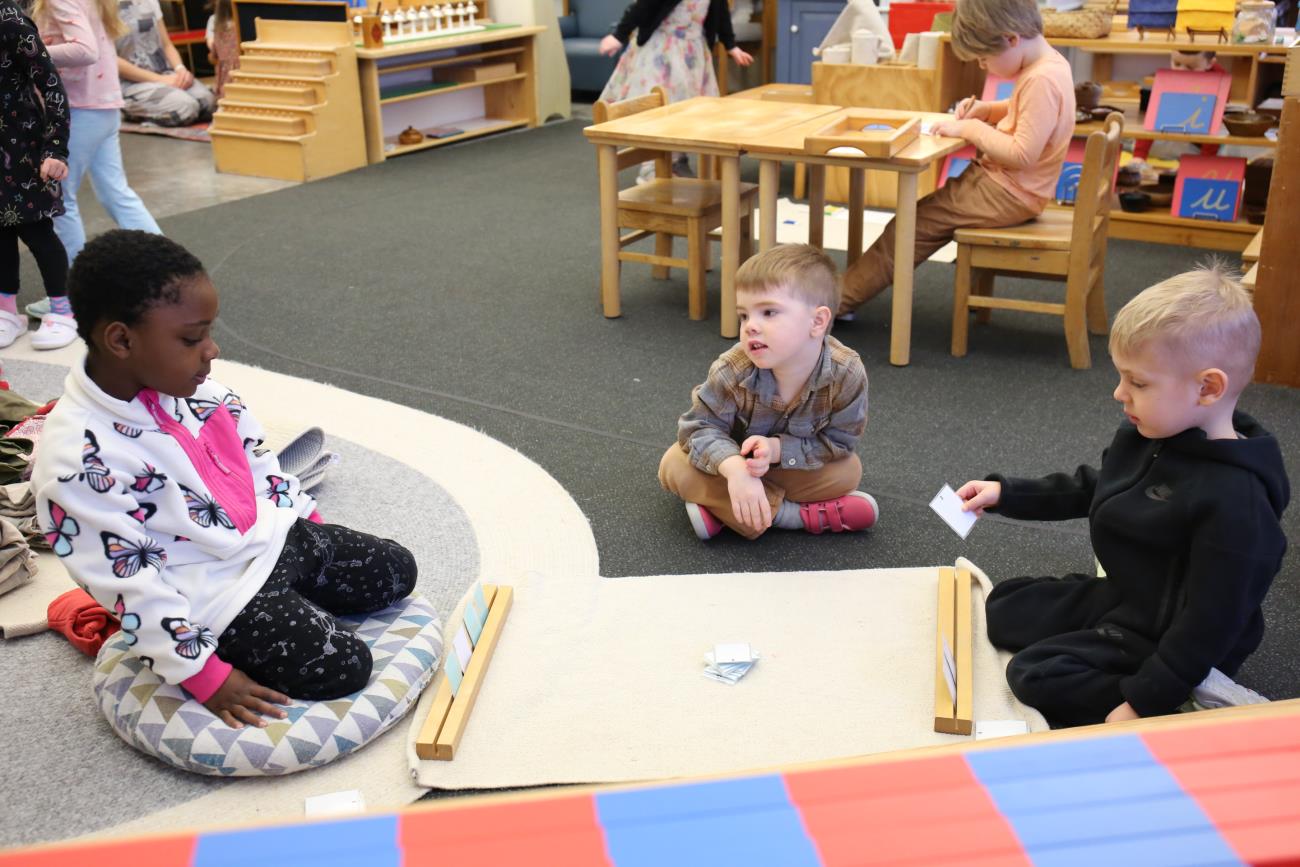Traditionally, school quality is judged by class size. Many believe a lower teacher-student ratio means more individualized attention and larger class sizes are thought to be a sign of less instructional time. This perception is founded on the idea that children learn more when they are one-on-one with an adult. Traditional schools view teachers as knowledge transmitters and children as empty vessels waiting to be filled. Montessori schools turn this accepted theory on its head. You won't hear us promoting small class sizes at The Children's House because we know larger communities with specific principles in place promote a different kind of individualized learning - one that educates children for life. Primary and elementary classrooms have around 25 children, so how do we do this and make sure each child's interests and needs are being met?
1. We have mixed-age classrooms.
Children stay in Montessori classrooms for at least three years. This creates communities of mixed ages, which means there are a variety of needs in one classroom and the guide is not overwhelmed by many with the same need at the same time. It also means younger children have older peers to model behavior, teach lessons, and facilitate problem-solving. Peer-to-peer relationships not only alleviate the need for adult help but also allow older peers to solidify their learning and develop leadership skills. Montessori guides don't aim to be constantly available to children because it leads to dependence on adults. They do, however, nurture mixed-age relationships so children become comfortable solving problems on their own, debating, listening to other perspectives, offering help, and having responsibility within a community. These are lessons they can take with them outside of the classroom.
2. We offer self-correcting materials.
Larger student-teacher ratios work because Montessori teachers don't need to be as available to correct children's mistakes. The materials do most of the work. Many Montessori materials were scientifically designed to have a built-in control of error. This means the material gives the child feedback about their work without adults having to say a word. For example, the Cylinder Blocks in a primary classroom have 10 cylinders and 10 corresponding crevices. If a child completes the puzzle and a cylinder is left at the end, he automatically knows he needs to try again. Students at almost every level also use ceramic and glass dishes. If they fall and break, the student receives feedback about their movements without an adult having to step in.
3. We promote intrinsic motivation rather than rewards and punishments.
Montessori guides are careful to nurture children's inner desire to do well. When a child feels a sense of ownership and belonging in their environment, teachers don't have the task of doling out rewards and punishments in hopes the class will obey out of fear. A large community of intrinsically motivated children creates a natural system of checks and balances. They hold each other accountable, removing the traditional teacher's time-consuming job of keeping up with sticker charts and bad grades. Even better, children carry this inner drive to succeed and help the greater good when they leave the classroom.
4. We shift the focus from the adult to the child.
When an entire class is listening to an adult teach the same concept, the students either move along together or individuals are left behind or unchallenged. Whole group learning means teachers are required and their time is a limited resource. Montessori classrooms shift the focus from the teacher to the student. Learning is set up to happen individually, in small groups, and from peers. When children are set up to learn from each other rather than with each other, interests are honored and instructional time is amplified. If this principle were applied in a small classroom, students look to their teacher for guidance and the teacher would be tempted to over-correct, interrupt concentration, and solve their problems.
